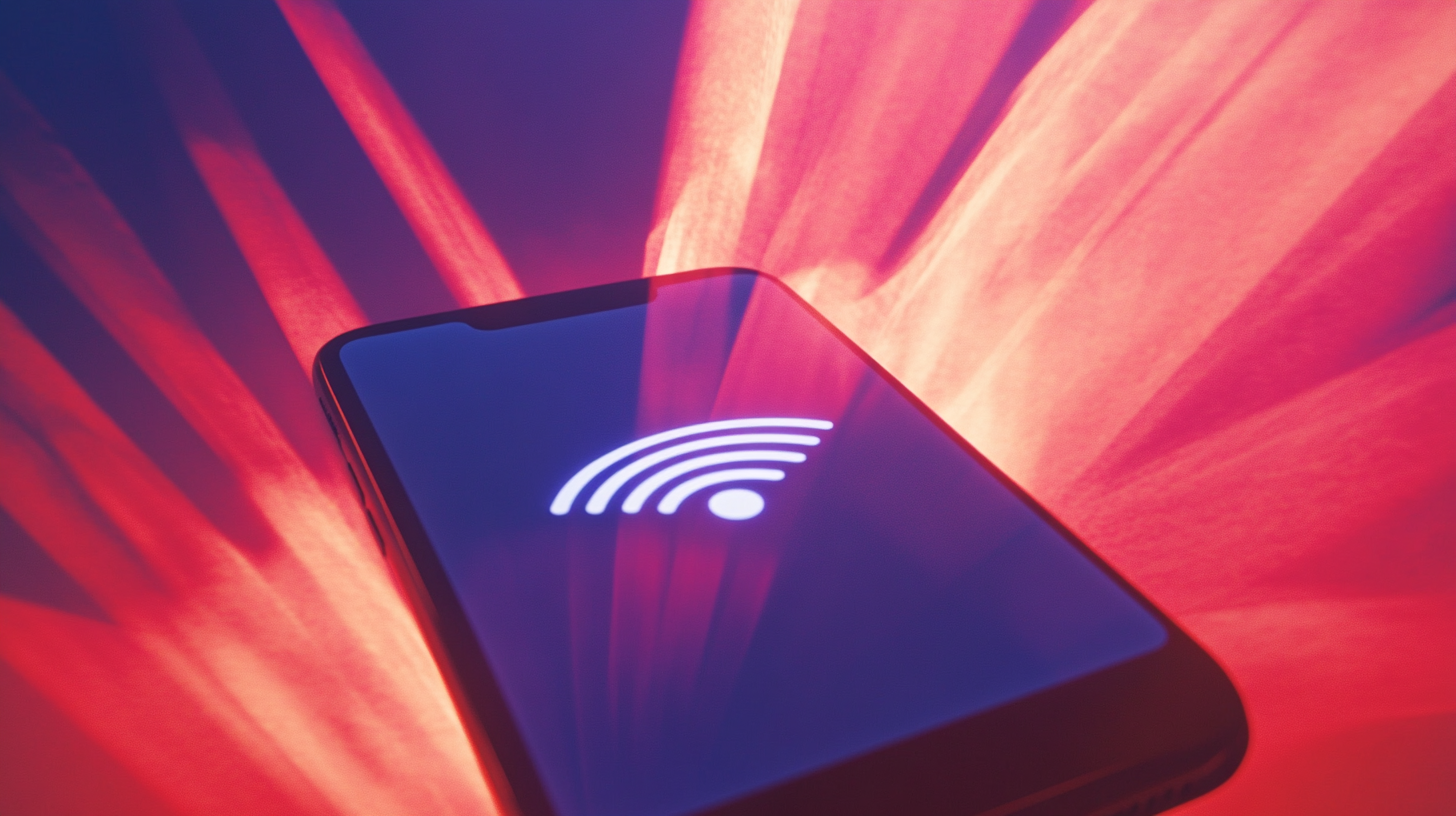Our Top Five Best Ways to Get Portable Wifi
Wed May 07 2025
|Internet ServicesDiscover the 5 best ways to get portable WiFi. Compare mobile hotspots, smartphone tethering, travel routers, and satellite options to stay connected anywhere.

In today’s connected world, staying online while on the move has become essential for work, travel, and everyday life. Whether you’re a digital nomad working from different locations, a frequent traveler, or someone who needs internet access beyond the reach of traditional broadband, portable WiFi offers the flexibility and convenience you need.
Portable WiFi refers to any solution that enables internet access on the go, independent of fixed broadband connections. Unlike traditional home internet services that rely on physical cables, portable WiFi typically uses cellular networks or satellite technology to keep you connected wherever you are.
There are several compelling reasons why you might need portable WiFi:
- Travel reliability: Stay connected while traveling domestically or internationally
- Remote work flexibility: Work effectively from any location
- Backup internet: Have a reliable backup when your primary connection fails
- Multiple device connectivity: Connect several devices simultaneously
- Access in areas with limited infrastructure: Get online in places without fixed broadband options
Understanding your specific needs is crucial for selecting the right portable WiFi solution. Let’s explore the five best ways to get portable WiFi in 2025.
1. Dedicated Mobile Hotspot Devices
Dedicated mobile hotspots (also called pocket WiFi or MiFi devices) are purpose-built devices that connect to cellular networks and create a personal WiFi network for your devices.
How Dedicated Mobile Hotspots Work
These compact devices contain both a cellular modem and a WiFi router. After inserting a SIM card with an active data plan (or using built-in eSIM/CloudSIM technology), the device connects to available cellular networks (4G LTE or 5G) and broadcasts a WiFi signal that your devices can connect to.
Advantages of Dedicated Mobile Hotspots
- Multiple device support: Most hotspots can connect 10-32 devices simultaneously
- Dedicated battery: Won’t drain your smartphone’s battery
- Superior performance: Better antennas and stronger signals than smartphone hotspots
- Enhanced security: Creates a private, password-protected network
- Flexibility: Many devices are unlocked, allowing you to switch carriers or use local SIMs internationally
Disadvantages of Dedicated Mobile Hotspots
- Additional expense: Requires purchasing the device ($40-$800+) and a separate data plan
- Extra device management: One more gadget to carry and keep charged
- Data limitations: Most plans have data caps or deprioritization after certain usage thresholds
Key Features to Consider When Choosing a Mobile Hotspot
When shopping for a dedicated mobile hotspot, pay attention to these important features:
- Network compatibility: 5G offers faster speeds but costs more; 4G LTE provides broader coverage
- WiFi standards: Newer standards (WiFi 6/6E) offer better performance with multiple devices
- Battery life: Look for 8+ hours for all-day use (ranges vary from 6-18+ hours)
- Device support capacity: Match to your needs (5 devices for individual use, 15+ for families/groups)
- Additional ports: Some include Ethernet ports or external antenna connections
- Carrier compatibility: Unlocked devices offer more flexibility, especially for international use
- eSIM/CloudSIM support: Eliminates physical SIM cards for easier plan management
Popular Mobile Hotspot Options in 2025
Top mobile hotspot devices currently available include the NETGEAR Nighthawk series (particularly the M7 Pro for 5G), Inseego MiFi X PRO 5G, GlocalMe Numen Air 5G, and Skyroam Solis models. These devices are available from major carriers like Verizon, AT&T, and T-Mobile, as well as MVNOs (Mobile Virtual Network Operators) like Boost, Cricket, and Metro.
2. Smartphone Tethering (Mobile Hotspot Mode)
Nearly all modern smartphones can share their cellular data connection with other devices, effectively turning your phone into a temporary WiFi hotspot.
How Smartphone Tethering Works
Your smartphone uses its cellular connection to access the internet, then creates a small WiFi network that other devices can join. Most phones also offer USB or Bluetooth tethering options.
Advantages of Smartphone Tethering
- Convenience: No additional device needed
- Cost efficiency: Often included in existing phone plans
- Network technology: If you have a 5G phone, you can leverage those faster speeds
Disadvantages of Smartphone Tethering
- Battery drain: Significantly reduces your phone’s battery life
- Connection limits: Typically supports fewer devices (5-10) than dedicated hotspots
- Data restrictions: Hotspot data often has stricter caps than regular data
- Limited features: Fewer network management capabilities than dedicated devices
Smartphone tethering works best for occasional use, connecting one or two devices for basic tasks, or as a backup when you forget your dedicated hotspot. It’s less suitable for all-day use or connecting multiple devices for extended periods.
3. Travel Routers: Enhance Existing Connections
Travel routers are compact devices that connect to an existing internet source and create a private WiFi network for your devices.
How Travel Routers Work
Unlike mobile hotspots, travel routers don’t provide internet access directly through cellular networks. Instead, they connect to existing WiFi networks (like hotel WiFi) or Ethernet connections and rebroadcast the signal as your own secure network.
Advantages of Travel Routers
- Enhanced security: Creates a private layer between your devices and public WiFi
- Simplified connections: Connect multiple devices with a single login
- Signal boosting: Can extend the range of weak existing WiFi signals
- Wired options: Often include Ethernet ports for more stable connections
Disadvantages of Travel Routers
- Requires existing internet: Doesn’t provide internet access on its own
- Additional device: Another gadget to carry and manage
Travel routers are ideal for frequent travelers who regularly use hotel or public WiFi and want to improve security and convenience. They complement rather than replace other portable WiFi solutions.
4. Satellite Internet Options for Remote Areas
For locations without cellular coverage, satellite internet provides connectivity virtually anywhere.
How Satellite Internet Works
Satellite internet requires specialized equipment (often a portable dish) to communicate with orbiting satellites that relay internet data.
Advantages of Satellite Internet
- Global coverage: Works in extremely remote locations where no other options exist
- Independence from terrestrial infrastructure: Functions during natural disasters or in wilderness areas
Disadvantages of Satellite Internet
- Expensive: Equipment and monthly plans cost significantly more than cellular options
- Bulky equipment: Requires carrying and setting up larger hardware
- Performance limitations: Generally slower speeds and higher latency than cellular
- Line-of-sight requirement: Needs clear view of the sky
The most notable satellite option for portable use is Starlink Roam (formerly Starlink for RVs), which has revolutionized portable satellite internet with more reasonable speeds and pricing than previous options, though still more expensive than cellular solutions.
Satellite internet is best for essential connectivity in truly off-grid locations or as a backup for emergency situations.
5. Public WiFi Networks: Free but Limited
Accessing existing WiFi networks in public locations is the simplest way to get online without additional equipment.
How Public WiFi Works
Simply connect your device to available networks in cafes, libraries, hotels, airports, and other public spaces.
Advantages of Public WiFi
- Cost-free: Often available without direct charges
- Widely available: Common in urban and tourist areas
- No equipment needed: Works with any WiFi-enabled device
Disadvantages of Public WiFi
- Security concerns: Networks are often unsecured, making your data vulnerable
- Inconsistent performance: Speeds vary greatly and can be very slow during peak times
- Access restrictions: Many networks have time limits or content restrictions
- Availability challenges: Not reliable in many locations
To use public WiFi more securely, always employ a VPN (Virtual Private Network) service to encrypt your connection and protect your data from potential eavesdropping.
Choosing the Right Portable WiFi Solution for Your Needs
The “best” way to get portable WiFi depends entirely on your individual requirements. Consider these scenarios:
For Everyday Domestic Use
A dedicated mobile hotspot provides the most reliable solution for regular use within your home country. Consider your expected data usage, number of devices, and the coverage maps of available carriers in your frequently visited areas.
For occasional use or as a backup, smartphone tethering may be sufficient if your phone plan includes adequate hotspot data.
For International Travelers
Consider these options for international connectivity:
- Local SIM cards or eSIMs: Often the most economical approach for longer stays in a single country if your device is unlocked and compatible
- Travel-focused hotspots: Services like GlocalMe, Skyroam, or My Webspot offer global data with simplified billing
- International roaming plans: Convenient for short trips but typically the most expensive option
For Remote Workers and Digital Nomads
If you rely on consistent internet for your livelihood, consider:
- Multiple connectivity options: Pairing a primary solution (like a dedicated hotspot) with a backup method (like smartphone tethering)
- Carrier diversity: Hotspots from different network providers to maximize coverage
- Higher data allowances: Plans designed for heavy usage rather than occasional connectivity
For Extremely Remote Locations
In areas completely off the cellular grid, satellite options like Starlink Roam are your primary choice despite their higher cost and equipment requirements.
Important Considerations Before Choosing Portable WiFi
Data Consumption Awareness
Be realistic about your data needs. Streaming video (especially in HD or 4K), video conferencing, and online gaming consume significant data. A single hour of HD streaming can use 1-3GB, while 4K streaming might use 7GB+ per hour.
Coverage is Critical
Even the most generous data plan is useless without network coverage. Always check carrier coverage maps for your intended locations before committing to a service.
Security Precautions
Protect your connection by:
- Using a VPN, especially on public WiFi
- Setting strong, unique passwords for your personal hotspot
- Ensuring your hotspot uses WPA2 or newer encryption
- Keeping device firmware updated
Setting Up Your Portable WiFi Device
Most dedicated mobile hotspots are straightforward to configure:
- Charge the device fully
- Insert the activated SIM card (if not using eSIM)
- Power on the device
- Connect to the hotspot’s WiFi network using the default password (usually printed on the device)
- For better security, change the default network name and password through the device’s management interface
Stay Connected Anywhere with InternetServices.com
By carefully evaluating your specific needs—including data requirements, coverage areas, number of devices, and budget constraints—you can choose the portable WiFi solution that keeps you seamlessly connected wherever life takes you.
Take the quiz on our page today to find an internet service provider near you!



